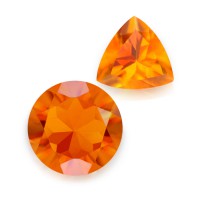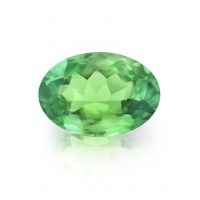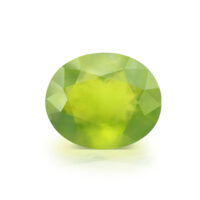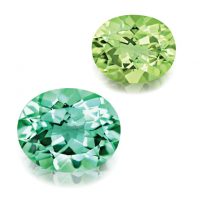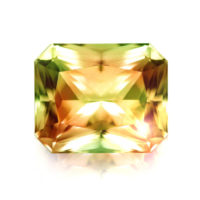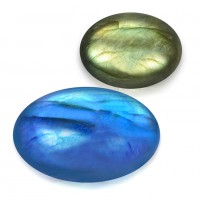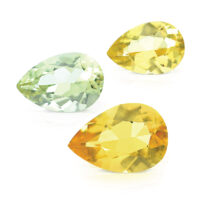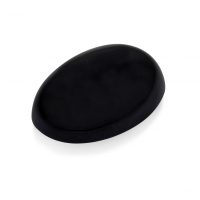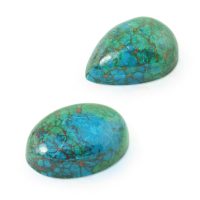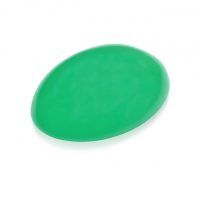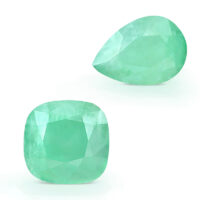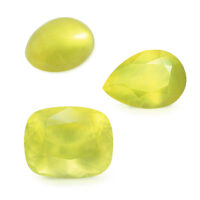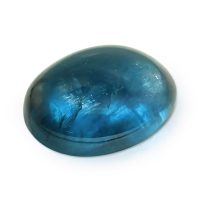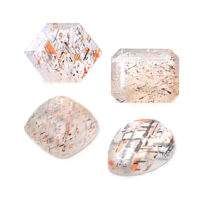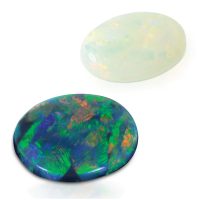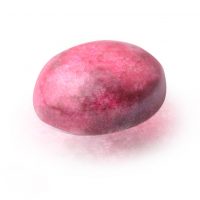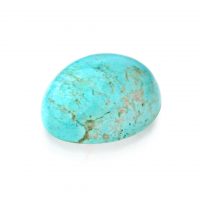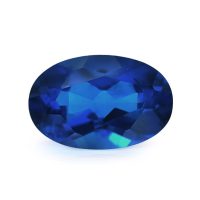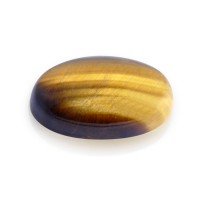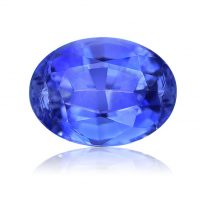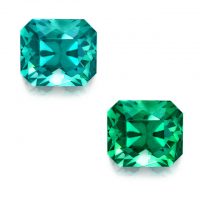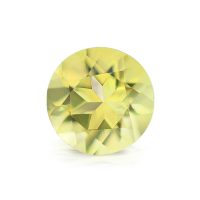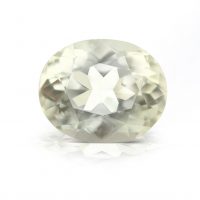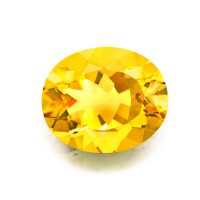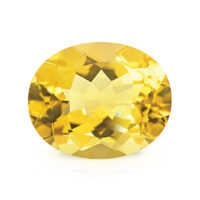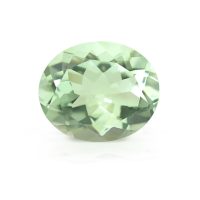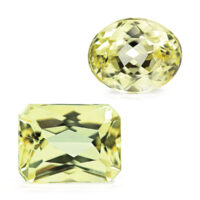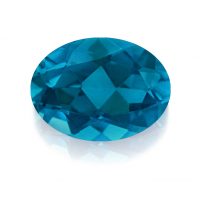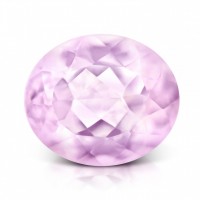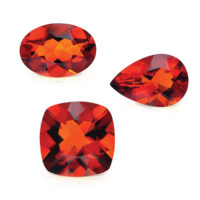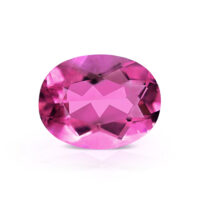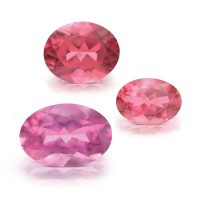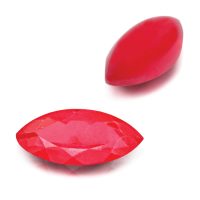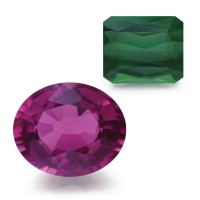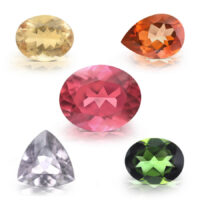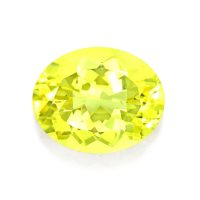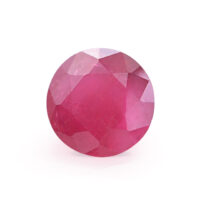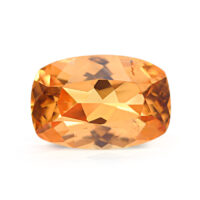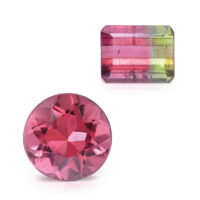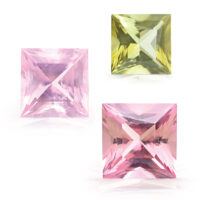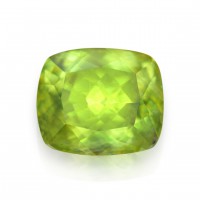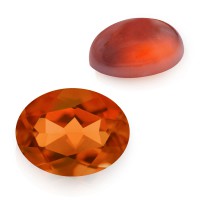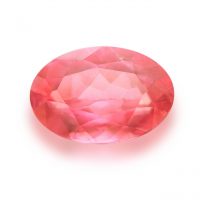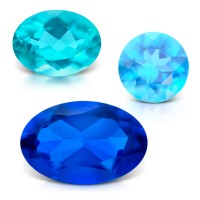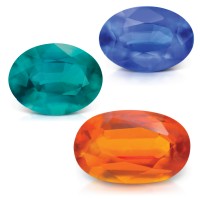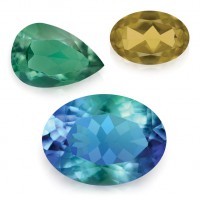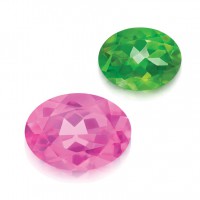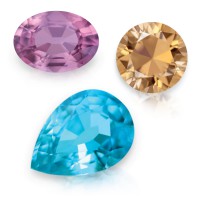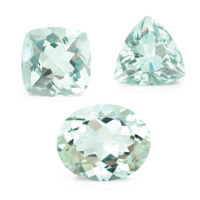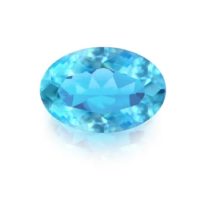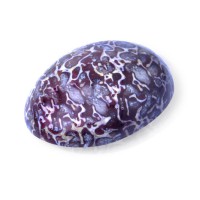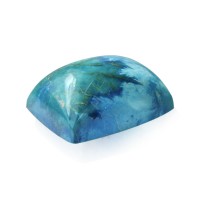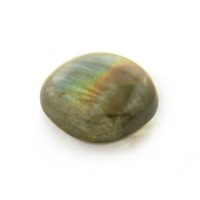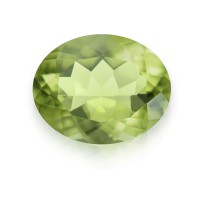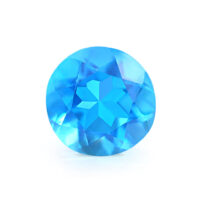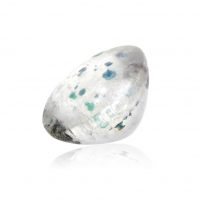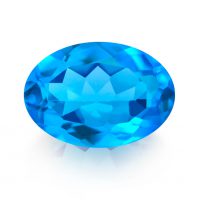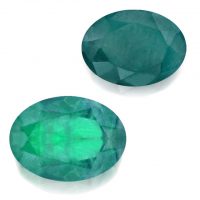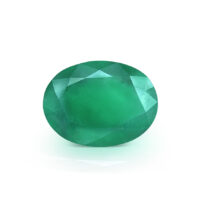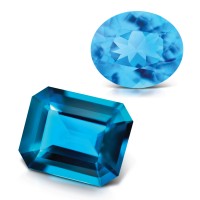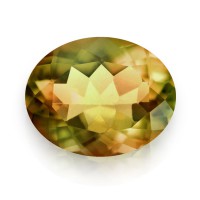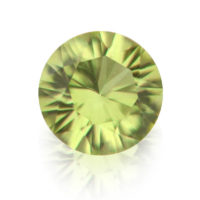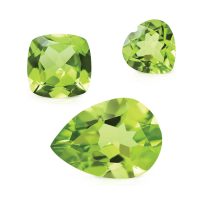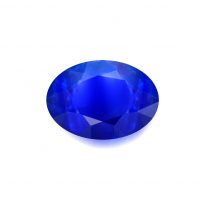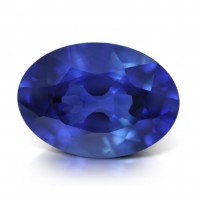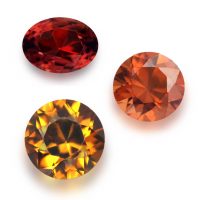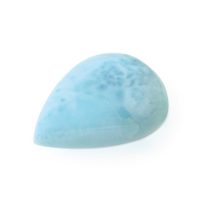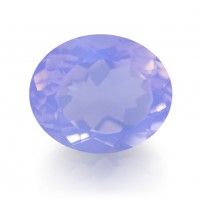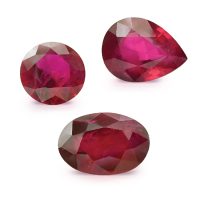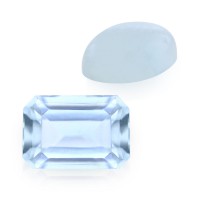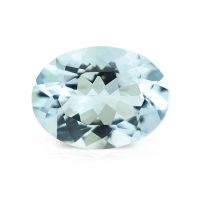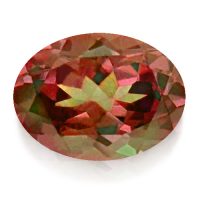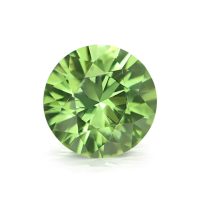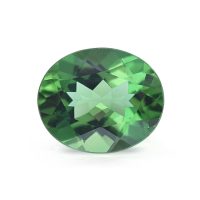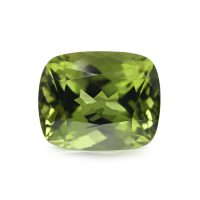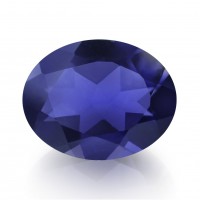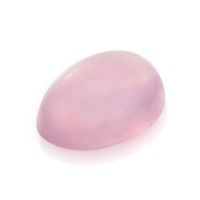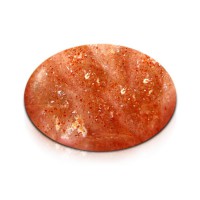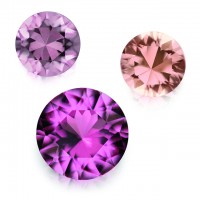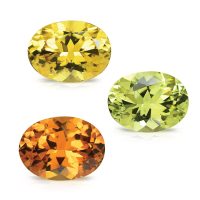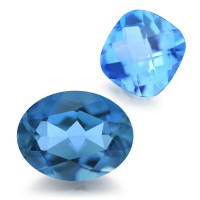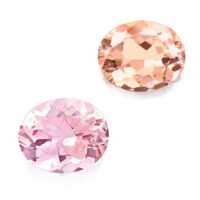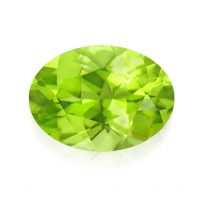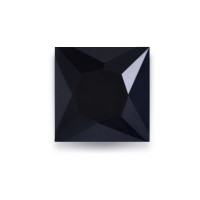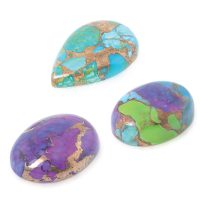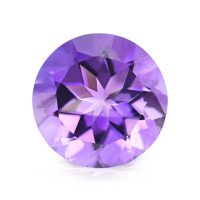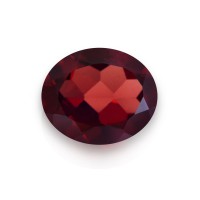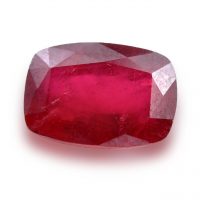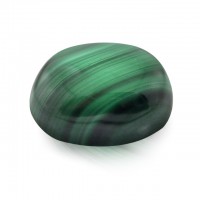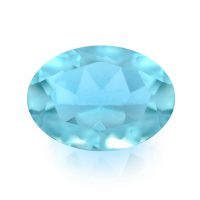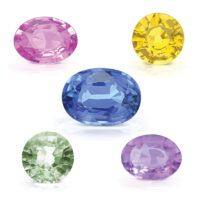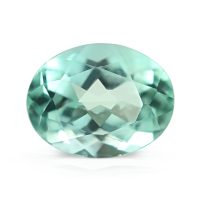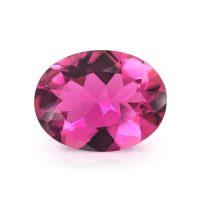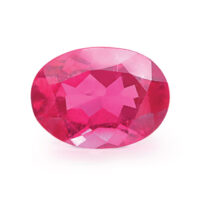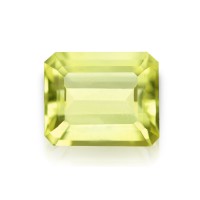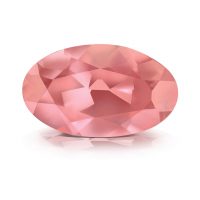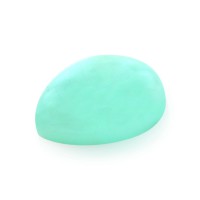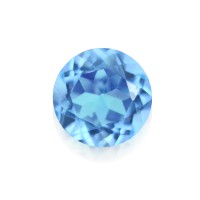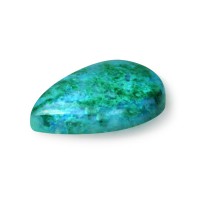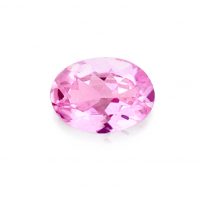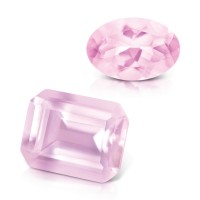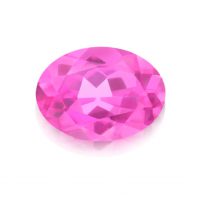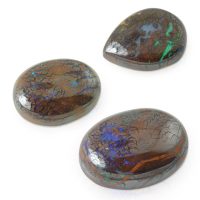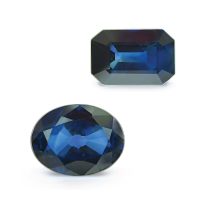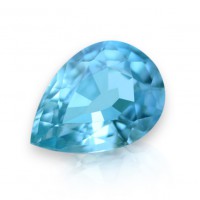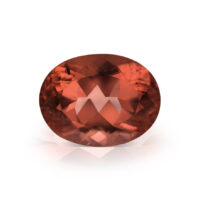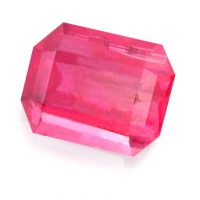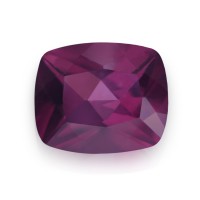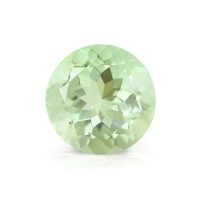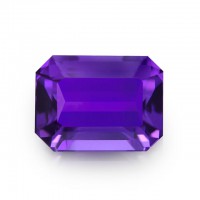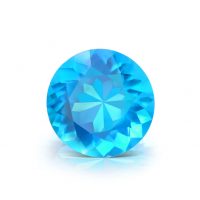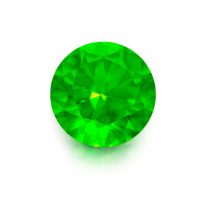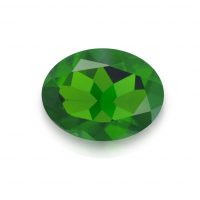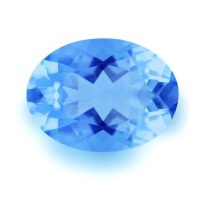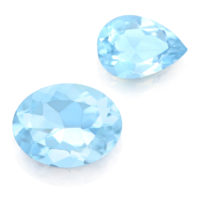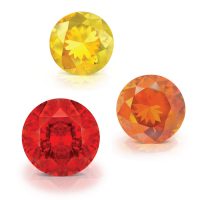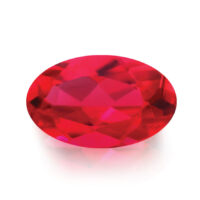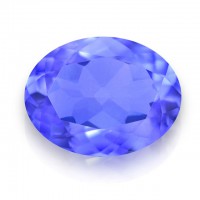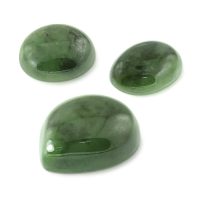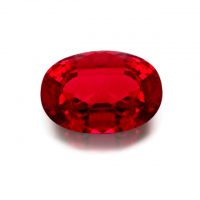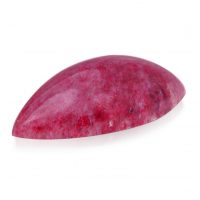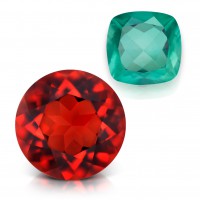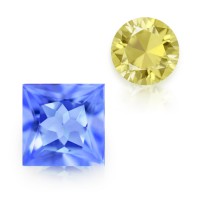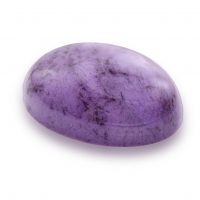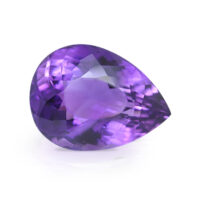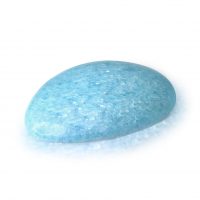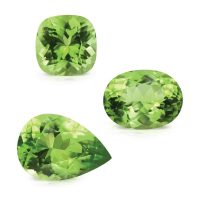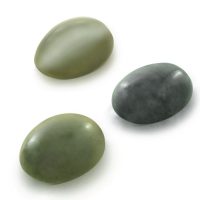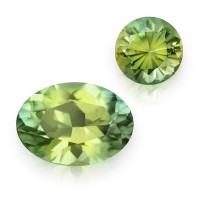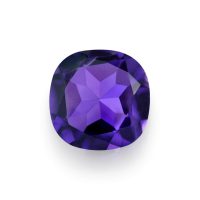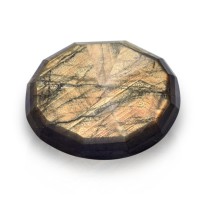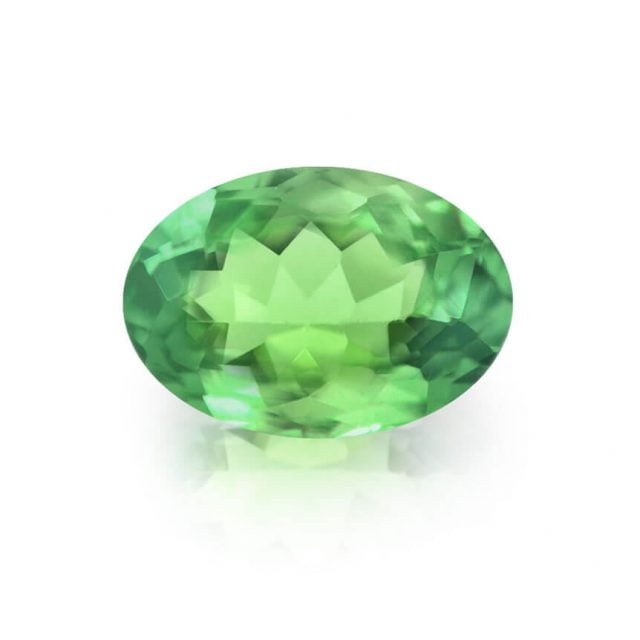

Alexandrite are beautiful color change gemstones from the Raipur District of the Indian state of Chattisgarh. June’s birthstone and the quintessential color changing gemstone, Alexandrite is one of the rarest and valuable gemstones. Alexandrite has it all: beauty, sporadic availability, exclusivity (due to its high price), an intriguing name and a fascinating history.
Hardness 8.5
Refractive Index 1.746 - 1.763
Relative Density 3.70 - 3.78
Enhancement None
Beauty
The ‘gem of the tsars’, or simply, the ‘tsar stone’, Alexandrite is a gemstone forever linked to the ruler for whom it was named, Tsar Alexander II of Russia (1818-1881), the country he ruled and the twilight of Russian aristocracy. Alexandrite is a color change gemstone displaying different colors in different light sources (i.e. natural (candescent) and artificial (incandescent) light).
Our Alexandrite displays medium-toned bright greens to orangey-reds. The single biggest value consideration of Alexandrite is its color change and it is judged by the strength of its change, and the attractiveness and distinctness of its colors. Because of its intrinsic scarcity, Alexandrite is rare and expensive in any size and the most common shapes are cushions, octagons, ovals and rounds. Good cutting accentuates the innate beauty of Alexandrite and it is finished eye-clean, the highest quality clarity grade for colored gemstones, with an attractive shape and overall appearance.
You may be wondering if the famous Alexandrite description ‘Emerald by day’ and ‘Ruby by night’ is really accurate. In his book, Precious Stones and Gems (1898), Edwin Streeter says, “It has been said that the Alexandrite is an Emerald by day and an Amethyst at night,” and this is telling. In reality, Alexandrite is not dependent on the colors of the change. In candescent light, Alexandrite can appear blue-green, forest green, green, khaki, teal or yellowish-green, and combinations thereof, and brownish-red, orangey-red, red or reddish-purple, and combinations thereof, in incandescent light. While color preference is subjective, the ‘ideal’ Alexandrite will display distinct medium toned intense colors in both light sources, with the pure daylight greens to night time reds valued highest.
Alexandrite is pleochroic, or getting more technical, trichroic (three-colored). This means each Alexandrite crystal has three colors, green, red and yellow, whose intensity changes when it is viewed from different angles, but confusingly, this has absolutely nothing to do with its color change. Color change works due to natural and artificial light having different amounts of the spectral colors (blue, green, orange, red, violet and yellow) and the way chromium absorbs and reflects light. Chromium absorbs the yellow spectrum as white light passes through Alexandrite, leaving an even split of blue and green. Sunlight is fairly balanced, proportionally containing more of the green our eyes favor, so it appears green in candescent light, while incandescent light has more red, so its color changes to red. Simplistically, the better the concentration and configuration of chromium in Alexandrite, the better the color change. Actually seeing color change is dependent on several factors, including the intensity and purity of the two light sources, your eyesight, pleochroism, time of day, and even the weather. A potentially confusing aspect of assessing color change is ‘bleed’. This is when a color change gem’s two colors are visible at the same time. As most of us live in places where mixed lighting is the norm, ‘bleed’ is common, especially for a light sensitive color changing gem like Zultanite®. Alexandrites that genuinely show an excessive bleed, diminishing their color change, will be priced accordingly.
The horror of WW2, of which Russia bore the brunt, saw Alexandrite’s reds linked with the color of blood, becoming known as the ‘widow’s stone’. Intriguingly, the name didn’t dissuade interest in this gem, so much so that simulated Alexandrite was a mainstay of Soviet jewelry. An interesting Alexandrite folktale from Russia is that if you only wear one piece of Alexandrite you will be lonely. Ostensibly due to its two colors requiring a partner, herein lies the problem: Alexandrite is uniquely individual and notoriously difficult to match!
The Emerald deposit (Izumrudnye Kopi) on the Tokovaya river in Russia’s Urals where Alexandrite would later be found was discovered by chance in 1830 and by 1833 the as yet unnamed Alexandrite was found. Although it was undoubtedly Finnish mineralogist Dr. Nils Gustaf Nordenskjöld who figured out what is was, suggesting the name of Diaphanite (from the Greek ‘di’, meaning two and either ‘aphanes’, meaning unseen or ‘phan’, meaning appearance), in 1834, Count Perovskii coined ‘Alexandrite’, presenting it to the future Tsar Alexander II on his 16th birthday. Interestingly, Dr. Nordenskjöld published the first scientific paper on Alexandrite in 1842 and later discovered and named Demantoid Garnet. A member of the Chrysoberyl family, Alexandrite is its color change and most coveted variety. Chrysoberyl was named by German geologist Abraham Gottlob Werner in 1790, using the Greek ‘chryso’ (golden) and ‘beryl’ (green gemstone). Chrysoberyl is a particularly brilliant gemstone especially noted for its cat’s eye variety and although rare, it also changes color, resulting in Cat’s Eye Alexandrite. Most Chrysoberyl is colored yellow due to iron trace elements, but vanadium very rarely yields vivid green examples, while Alexandrite is colored by chromium. Chromium is the Midas element that gives Emeralds and some Rubies their signature hues.
Rarity
Often described as the rarest of gemstones, Alexandrite’s rarity along with its color change, are the main reasons for its enduring popularity and high price. Russia and Sri Lanka were the only known sources of Alexandrite for approximately 90 years, despite the fact that no significant Russian Alexandrite was recorded since the 1917 Russian revolution.
While Brazil, Burma, Madagascar, Mozambique, Sri Lanka, Tanzania and Zimbabwe have all produced small quantities of marketable Alexandrite, India is the newest significant producer.
Discovered in Chattisgarh in 1994, in neighboring Andhra Pradesh in 1996, and later in Odisha, Indian Alexandrite production is extremely limited, only constituting a tiny amount of the regular Chrysoberyl mined. Our Alexandrite hails from the Raipur District of the Indian state of Chattisgarh. Alexandrite is also one of the few gemstones that are not enhanced.
Durability & Care
A durable jewelry gemstone, Alexandrite (Mohs’ Hardness: 8.5) should always be stored carefully to avoid scuffs and scratches. Clean with gentle soap and lukewarm water, scrubbing behind the gem with a very soft toothbrush as necessary. After cleaning, pat dry with a soft towel or chamois cloth.
Map Location

Click map to enlarge
